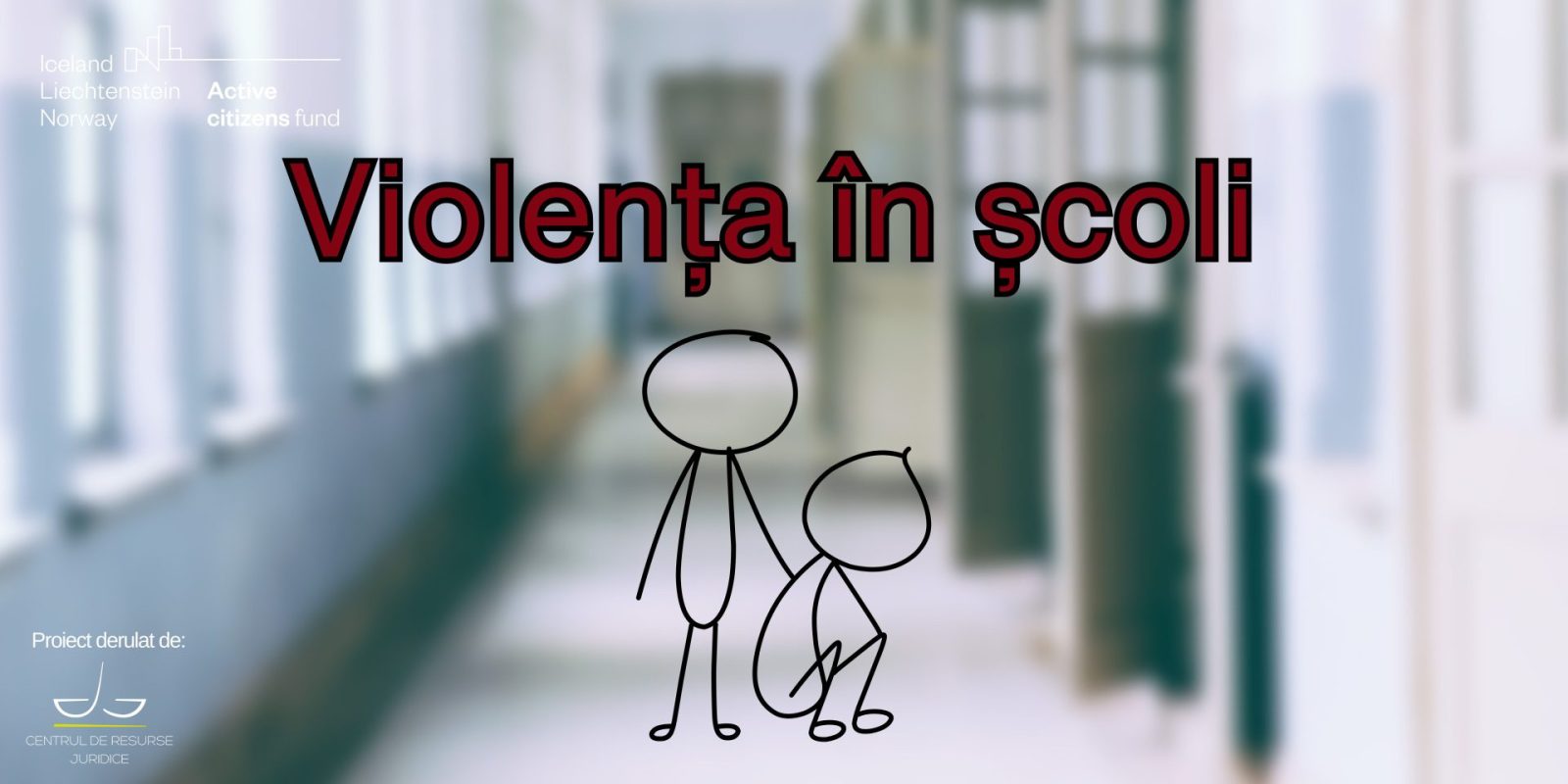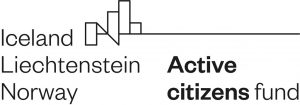1. CONTEXT
In Romania, in the Report on the 2021-2022 school year[1], the Ministry of Education highlighted the increasing trend[2] of acts of violence in schools[3], of which 69% (i.e. 6744 cases) of the total number of 9741 acts of violence reported for the year 2021-2022, were classified as attack on the person, the rest being classified as attack on property (14%), other acts of violence (13%) or attack on the school unit security (4%).
In addition, the Report on the 2022-2023 school year[4] mentioned the existence of a real phenomenon of violence in pre-university education establishments and proposed, among the priority objectives, the development of integrated measures and the implementation of specific actions to expand partnerships on legal issues and the fight against violence in schools, issues that would make students aware of their rights, obligations and the consequences of their actions.
Beyond statistics and formal objectives, the daily reality illustrates even more clearly the acute need for concrete measures to combat violence in schools: almost daily, cases of violence are published in the national press[5], both between pupils and between pupils and teachers. Clearly, the context described runs counter to the natural purpose of educational establishments, namely to provide a safe space in which all pupils can develop.
2. THE CURRENT LEGISLATIVE STATUS
Law on pre-university education no. 198/2023 defines[6] psychological violence – bullying – as the action or series of physical, verbal, relational and/or cyber actions, in a social context difficult to avoid, committed with intent, involving an imbalance of power, resulting in the violation of dignity or the creation of an intimidating, hostile, degrading, humiliating or offensive atmosphere, directed against a person or a group of persons and targeting aspects of discrimination and social exclusion, which may relate to membership of a particular race, nationality, ethnic group, religion, social or disadvantaged group or to beliefs, sex or sexual orientation, personal characteristics, and which take place in pre-university educational institutions and in all places of education and training.
As a preliminary remark, we note a terminological inconsistency that has been taken over from the National Education Law no. 1/2011 (found in item 61 in the APPENDIX: LIST of definitions of terms and expressions used in the law): the legislator establishes a synonymy between psychological violence and bullying, but includes physical actions in the definition of these terms. Thus, while psychological studies[7] define bullying as repeated, intentional behaviour generated by an imbalance of power between the victim and the aggressor[8], the Romanian legislator does not draw a clear demarcation between single acts of violence and the phenomenon of bullying.
We also note that the National Education Law No 1/2011 did not provide for a specific sanction for the act, but there is the possibility of applying disciplinary on students and teachers, and administrative sanctions on educational institutions that do not take action against the phenomenon.
The Methodological Norms approved by the Order of the Ministry of Education and Research no. 4343/2020 (published in the Official Journal no. 492 of 10 June 2020) provide for multidisciplinary intervention in bullying situations for prevention and combat, but do not refer at all to applicable sanctions[9].
Additionally, on 22 September 2023, the Order approving the Procedure for the Management of Cases of Violence against Pre-schoolers/Preschoolers/Pupils and School Staff[10] (hereinafter referred to as the Procedure) entered into force, with the following new, welcome aspects being instituted:
- The mandatory implementation of an anonymous reporting mechanism for suspected and actual violence in each educational establishment;
- Prohibition of repeated interviewing of the victim to prevent re-victimisation;
- To inform students who become victims of violence and their parents about the possibility of benefiting from paid psychological and psychotherapeutic intervention services;
- Categorising as serious forms of violence forcing children with food allergies or food intolerances to eat/ ingest foods that trigger allergic reactions or to which the child develops food intolerances, including pretending that a food is safe and tricking pre- schoolers/ pre-schoolers/students to do so.
On the other hand, we can also identify a number of critical issues in the Procedure and the Law on Pre-University Education No 198/2023 (hereinafter referred to as the Law), as follows:
- Section 4 of the Procedure makes a distinction between (i) mild cases of pre- school/preschool/pupil violence and (ii) serious cases of pre-school/pupil violence. In order to be classified as a mild case of violence, an event must meet two cumulative conditions 1) itmust have a low/occasional frequency: a mild case of violence is repeated at most 3 times a month; if the frequency is higher, the case must be classified as a serious form of violence and 2) it must have minor consequences for the victim. Worryingly, for the sake of clarity, the Procedure lists by way of example some mild forms of violence, including unwanted touching without sexual connotation, spitting, throwing objects, swearing, intimidation. On the other hand, the Procedure states that if the integrity or health of the victim(s) is affected (medical services are required), there has been psychological abuse (ascertained by a psychologist) and the like are classified as serious forms of violence.
We consider that the above-mentioned provisions are reprehensible, as they tend to minimise the impact of extremely serious acts, especially as they are directed against minors. In this respect, the doubt which the drafters of the Procedure apparently have about the existence of psychological abuse where a minor is the victim of unwanted touching or intimidation is inconceivable.
- The ban on installing audio-video surveillance cameras in classrooms where the majority of parents express their disagreement, in writing, as part of the educational contract is maintained, so victims of school violence may face significant evidentiary hurdles.
- The thematic inconsistency makes it difficult to apply the legislation in practice – for example, although the Procedure and the Law provide for mild and serious cases of violence, Art. 107 para. (10) of the Law states that notice of expulsion or expulsion may be ordered only in very serious situations, when the presence of the pupil in school endangers the safety of pupils or school staff, affecting the right to education or work. Very serious situations, however, are not defined and are not circumstantiated by the legislator, the only mention of them being in the text of the law quoted above. Semantic consistency is, however, particularly important in the drafting of legislation, as the interpretation of legal provisions should be unequivocal.
A final point of criticism is the legislative inflation that can be noted in the field of school violence – despite the necessary initiative to prevent and combat violence in schools, the authorities are too little concerned with the actual implementation of this objective.
Thus, for example, at the level of the County School Inspectorates we could not identify a concrete calendar for the organisation of courses, conferences or other events aimed at educating pupils, teachers and parents. On the other hand, 8 ministers have signed the National Framework Action Plan on School Safety[11], which includes extremely ambiguous measures (e.g. the creation of a safety network around pupils, made up of families, teachers, child protection, public order, school safety and anti-drug specialists), placed under the responsibility of a remarkable number of public authorities (e.g. the above-mentioned measure is the responsibility of the prefect, in collaboration with IPJ, IJJ, DJIP, CPECA, pupils’ associations, parents’ associations, DGASPC, local public administration authorities).
In fact, the above-mentioned regulatory acts contain ambiguous provisions which are difficult to apply in practice and do not provide for quantifiable indicators and objectives for monitoring the degree of achievement of the proposed objective.
Moreover, the unclear distribution of the same tasks between (almost) all county authorities only creates the conditions for institutional blockages and procedural vacuums – for example, parents and teachers interested in fulfilling an obligation laid down in the National Framework Action Plan on School Safety are expected to not know which authority to turn to, since neither the Plan, nor the Law nor the Procedure include the flows of inter- institutional collaboration between the relevant authorities.
3. CONCLUSIONS AND RECOMMENDATIONS
Without wishing to make an exhaustive analysis of the acts that may constitute violence in schools, it should be noted that the phenomenon of bullying in schools must be given greater attention by the state authorities, especially in terms of applying concrete measures to prevent and combat it.
Thus, by way of recommendation, we consider the following measures to be appropriate:
- Supporting school staff, parents and pupils in identifying cases of violence, through mandatory educational events on school violence, involving relevant NGOs;
- Reviewing the legislation applicable to school violence in order to correlate the provisions laid down in the multitude of relevant legislation and by drawing a clear demarcation as to what bullying meansand how to fight against it;
- Evaluating the existing public policies and plans and measures provided for in educational legislation in order to identify areas of poor implementation regarding psychological violence in the educational system.
- Available at: https://www.edu.ro/sites/default/files/_fi%C8%99iere/Minister/2022/Transparenta/Starea_in vatamantului/Raport-Starea-invatamantului-preuniversitar-2021-2022.pdf, accessed 29.01.2024.
- In the school year 2021-2022, compared to previous school years (2017-2018, 2018- 2019, 2019-2020, 2020-2021), there is a slightly increasing trend of violence in the school environment. In the first semester of the school year 2021 – 2022 a total of 5,405 acts of violence were recorded. Compared to the first semester of the previous school year, 2020 – 2021, when a number of 800 acts of school violence were recorded, there is an increase of 85.15%, in the context of students returning to school and conducting classes with physical presence. In the second semester of the school year 2021 – 2022, there is an increase of 67.29% in acts of violence compared to the second semester of the school year 2020 – 2021.
- By the term school, we mean pre-university educational establishments.
- Available at: www.edu.ro/sites/default/files/_fi%C8%99iere/Minister/2023/Transparenta/Rapoarte_sistem/ Raport-Starea-invatamantului-preuniversitar-2022-2023.pdf, accessed 29.01.2024.
- For example, on January 20, 2024, an article entitled Revolt at a school in Bucharest, where a 7-year-old student terrorizes his classmates and parents can do nothing was published – stirileprotv.ro/stiri/actualitate/revolta-la-o-scoala-din-sectorul-1-al-capitalei-unde-un- elev-de-7-ni-isi-terorizeaza-colegii-iar-parintii-nu-pot-face-nimic.html.
- Item 63 of the ANNEX to Law No 198/2023.
- Olweus D., Bullying at School: What We Know and What We Can Do, Wiley-Blackwell, 1993.
- K. Radliff, J. Hall, M. Ökten, School Bullying, Ohio State University, 2017.
- CLR study “Crimes motivated by hate and hate speech. Situation in Romania: 2021-2022”, February 2023, available at: www.crj.ro/wp-content/uploads/2023/02/Raport-Infractiuni-motivate- de-ura-2021-2022_feb23-1.pdf
- Order No 6235/2023, available at: https://legislatie.just.ro/Public/DetaliiDocumentAfis/274669
- The document was signed by the Minister of the Interior, Cătălin Predoiu, the Minister of Education, Ligia Deca, the Minister of Development, Public Works and Administration, Adrian-Ioan Veștea, the Minister of Family, Youth and Equal Opportunities, Natalia – Elena Intotero, Minister of Labour and Social Solidarity, Simona Bucura-Oprescu, Minister of Culture, Raluca Turcan, Minister of Health, Alexandru Rafila and Ms Lavinia Arnăutu, representative of the Department for Romanians Abroad, and is accessible at www.mai.gov.ro/wp-content/uploads/2023/09/Planul-National-Cadre-de-Actiune- privind-siguranta-scolara.pdf.



